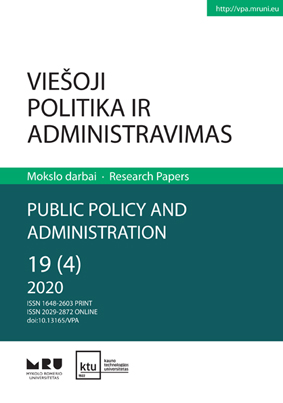PROBLEMS OF AMORTIZATION METHODOLOGY IN ACCOUNTING POLICY (ON THE EXAMPLE OF INSTITUTIONAL SECTORS OF THE UKRAINIAN ECONOMY)
PROBLEMS OF AMORTIZATION METHODOLOGY IN ACCOUNTING POLICY (ON THE EXAMPLE OF INSTITUTIONAL SECTORS OF THE UKRAINIAN ECONOMY)
Author(s): Valerii Zhuk, Dariia Trachova, Nataliia Semenyshena, Yevhen Ionin, Natalia ZhukovaSubject(s): Public Administration
Published by: Mykolas Romeris University
Keywords: depreciation; amortization; asset life cycle; accounting policy; pace of technological change; fixed assets; survey
Summary/Abstract: The aim of this study is the substantiation of the need to synchronize the depreciation methodology in accordance with the rate of change of technology in different industries. When studying the compliance of the depreciation methodology with the pace of scientific and technological progress, the statistical data of the World Bank from the period of 2014 to 2019 were analyzed. To study the opinion of economists, accountants, and engineers on the adaptation of the Hulten-Wykoff method with Nomura’s improvements to the practice of depreciation in Ukraine from 2017 to 2019, a survey of the employees of the technical and accounting services of 2500 enterprises across the industries of agriculture (32% of enterprises), transport (34% of enterprises), industry (27% of enterprises), and trade (7% of enterprises) was conducted. To adapt the model for determining the life cycle of fixed assets in Ukraine, the method of dynamic programming using the Bellman optimality criterion was used. The modeling of the duration of the asset life cycle was carried out, which revealed discrepancies with the normative value in accordance with the Tax Code of Ukraine not only based on the types of assets but also depending on the field of their application. A dynamic approach to determining the life cycle of an asset with adjustments to the probability coefficient of technological change in a particular industry is proposed. The use of a sectoral approach allows for the objective assessment of the financial result of the use of fixed assets and the comprehensive assessment of the need for their renewal.
Journal: Viešoji politika ir administravimas
- Issue Year: 19/2020
- Issue No: 4
- Page Range: 142-154
- Page Count: 13
- Language: English

